Policy Points: On Carbon and Water, Policymakers Should Listen to Small Business
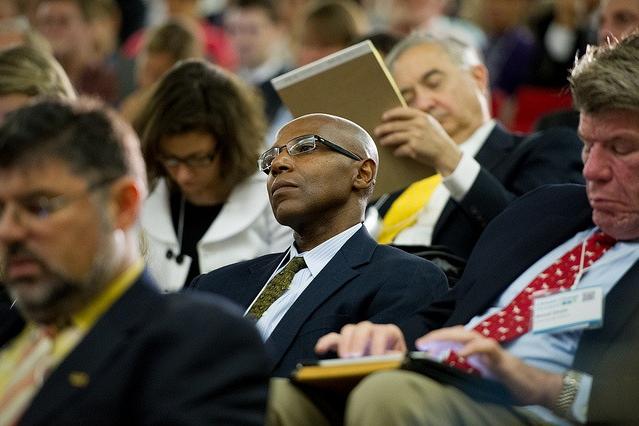

By Richard Eidlin
When the Environmental Protection Agency (EPA) issues proposals for new regulations, lobby groups that say they represent business interests screech and holler. They say that regulations hurt business and kill jobs. And unfortunately, some policymakers listen to them.
But what do actual business owners say?
It turns out that they agree with the general public. For example, across party lines, they support proposals that protect clean water and limit the impact of climate change. Policymakers would do much better to listen to these actual business owners, rather than lobby groups that are out of touch.
Two recent polls make the point quite clearly. The American Sustainable Business Council (ASBC) commissioned scientific, national polls of small business owners. One set of questions focused on clean water, and the other asked about carbon pollution.
Less partisan than Congress
One interesting general point is that small business owners are considerably less partisan on these issues than Congress. Small business owners usually skew towards the right politically. In this representative sample, 43 percent self-identified as Republican, 28 percent as Democratic and 19 percent as independent.
So, when the poll finds that 80 percent favor rules protecting upstream headwaters as covered by a proposed EPA rule, that includes Republicans (78 percent) and independents (73 percent). Or when it finds that 64 percent say that government regulation is needed to reduce carbon emissions from power plants, again, we need to understand that it includes a large number of Republicans and independents.
Clean water rules support
The EPA has proposed clarifications to existing clean water rules in a proposal it calls Waters of the U.S. Some industry and farm lobby groups have criticized it vehemently, but according to the poll, small business owners recognize that clean water is crucial for their companies -- and for the economy at large. The fact that 80 percent of small business owners support the protections in the proposal should put the issue to rest.
Other findings include:
- A strong majority, 71 percent, said that clean water protections are necessary to ensure economic growth. Only 6 percent disagreed with that statement. Even when both sides of the argument were presented, about 60 percent of small business owners supported stronger clean water regulations.
- Two-thirds of small business owners, 67 percent, were concerned that water pollution could harm their business in the future.
- 62 percent believe that government regulation is needed to prevent water pollution.
Support for limits on carbon from power plants
Small business owners are also concerned about the impact climate change will have on their businesses -- in some cases, they have already seen it -- and they support federal action to address it. But starting in June when the EPA proposed rules to limit carbon emissions from power plants, some business lobby groups attacked the effort.
Meanwhile, the ASBC small business poll found that business owners are afraid of climate change. Critics would do well to listen to the 64 percent who say that government regulation is needed to reduce carbon emissions from power plants. As for the idea that power companies should regulate themselves, only 29 percent said that was a good approach. The bottom line again is that EPA has the support of actual small business owners.
Other findings about climate change include:
- More than half of all business owners (53 percent) believe climate change will adversely affect their business. Of that, 19 percent – nearly 1 in 5 – say that extreme weather events associated with climate change have already affected their operations.
- Most business owners are concerned about climate change, regardless of whether the issue is characterized as “carbon pollution” or “climate change.” Majorities of business owners said they were concerned about “carbon pollution” (57 percent) and “climate change” (53 percent).
- When asked to consider supporting and opposing views together, 50 percent of business owners support limiting emissions from power plants, compared to 28 percent who oppose limits.
- Fifty-seven percent say that the biggest emitters, like power plants, should make the most significant cuts in carbon emissions, rather than have all businesses cut emissions equally.
Small business is held up as the backbone of the U.S. economy, the job creation engine for the country. And yet, business policy is too often driven by a minority of lobbyists and their clients, who are clearly out of step with the majority of small business owners.
The upcoming election presents an opportunity for small business owners to make a difference by advocating for and voting for those officials who most align with the policy choices that small businesses clearly prefer. At close to 28 million, small business owners have the potential to make an impact. Let’s hope they seize the opportunity.
Policy Points is produced by the American Sustainable Business Council. The editor is Richard Eidlin, Director – Public Policy and Business Engagement.
No OSHA Inspection Ever for Scrap Metal Plant, Scene of Fatal Accident
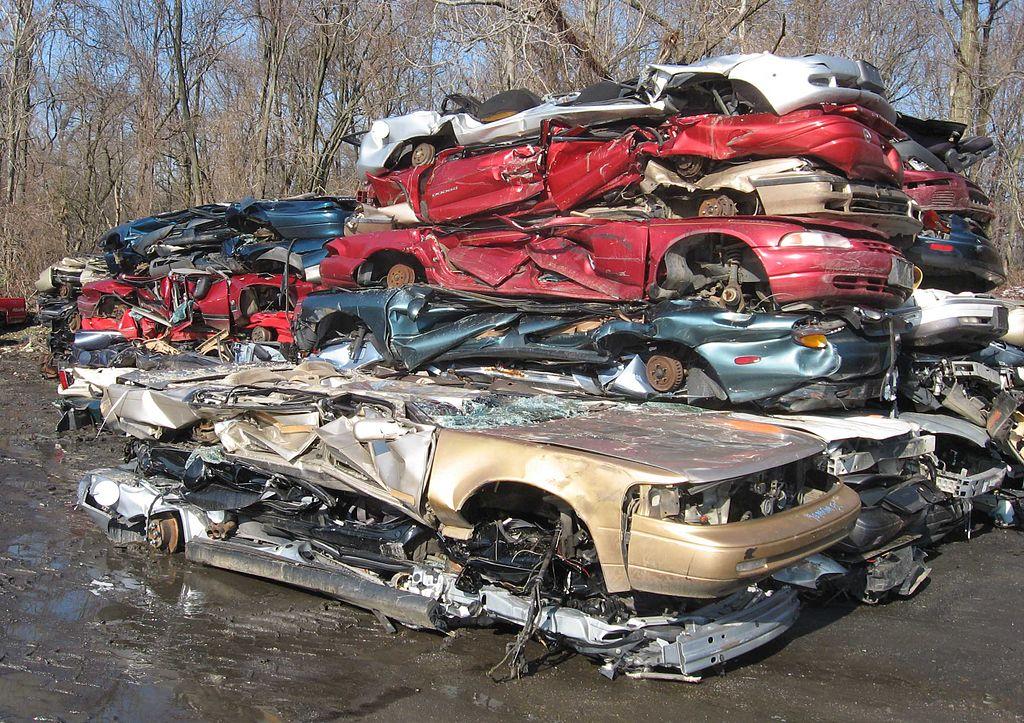

Scrap metal recycling is a US$50 billion business that as of 2013 employs over 150,000 people in the United States. While the slump in volatile metal prices caused revenues to plateau in 2013 after a prosperous few years, scrap metal recycling will long be profitable — especially when considering the fact 95 percent of cars eventually end up at a recycling facility. For this industry’s workers, however, with these jobs come risks.
A recent example is the death of a worker at an Illinois scrap metal recycling facility earlier this year. The company has now been fined US$470,000 by the U.S. Occupational Health and Safety Organization (OSHA) for eight different violations, ranging from the lack of employee protection from hazards to even a complete failure to post signs pointing out dangerous equipment. Furthermore, the dearth of safety features at a metal shredder is what led to the employee’s arm to be trapped in a conveyor belt, which led to his death. What is most disturbing, however, is that OSHA had never inspected the facility, as noted in an interview on Think Progress.
But while this case makes it easy to highlight this one company and OSHA’s shortcomings, the reality is that the scrap metal sector is one of the more dangerous settings for American workers — and little is done to enforce safety protections for workers.
A big part of the problem is that while Congress tasks various government agencies with enforcing federal laws and regulations, these agencies rarely receive the funding necessary to hire the people needed to review, inspect, audit and, in the end, file claims over violations. We saw this over a decade ago with the Securities and Exchange Commission, which did not have the staff to review public companies’ filings while the likes of Enron, Adelphia and MCI Worldcom collapsed from shady accounting practices. We have long seen an overwhelmed FDA struggle to inspect foods manufactured here and imported into the U.S., which has led to an onslaught of recalls from baby formula to peanut butter.
But OSHA’s directives for workplace safety, including the monitoring of recycling plants, compared to what it can do logistically, are absurdly impossible to enforce. Even the Wall Street Journal, hardly friendly to anything smacking of government regulation, points out that OSHA inspectors are only able to visit each workplace in the U.S. once every 99 years. The ratio varies by states: Texas businesses can count on an OSHA visit every 126 years while the state of Washington has knocked that rate down to once in 44 years. Granted, even if you take out the small mom-and-pop shops, the small offices, mall kiosks and the like, the odds remain that safety rules can be ignored or overlooked with little consequences — until a serious accident or death occurs. A business is far more likely to blindsided with a frivolous, and fiscally destructive, Americans with Disability-related lawsuit than a visit from an OSHA inspector. And while human nature dictates why we resent someone perceived as an outsider from showing up on our turf . . . an occasional OSHA inspection is far less harmful than what happened in Illinois or at a fertilizer plant in Texas earlier this year.
Unfortunately OSHA’s budget continues to suffer cuts while its burden grows. The agency has fewer inspectors than it did in 1981, when the U.S. had half the workplaces compared to today. It would be easy to say self-inspection and self-governing are the solution; but we still need a third party to enforce workers’ safety, and their lives—especially since the recycling industry has more hazards than we would like to believe.
Image credit: Wikipedia (IFCAR)
Leon Kaye has lived in Abu Dhabi for the past year and is currently spending some time in Uruguay. Follow him on Instagram and Twitter. Other thoughts of his are on his site, greengopost.com.
Tesco partners with UK charities to tackle unhealthy habits


Supermarket giant Tesco, Diabetes UK and the British Heart Foundation are to join forces early next year in a joint initiative to promote healthy living.
The partnership aims to reduce the risk of diabetes and heart disease by focusing on ways to encourage healthy eating and healthy cooking habits, including making it easier to choose foods lower in sugar, saturated fats and salt. The ultimate ambition for the partnership, it maintains, is to be “a force for positive change in the health of the nation”.
Barbara Young, Chief Executive of Diabetes UK, said: “Every year 24,000 people with diabetes die tragically young and many endure amputations, blindness and kidney failure. This innovative partnership with Tesco's reach and focus on food and the combined expertise of the two charities backed up by real resources is an important contribution to helping families across the UK.”
Greg Sage, Community Director at Tesco, added: “We're delighted to be part of this charity partnership - the first of its kind in the UK. Using our collective scale and expertise, we're going to make a real and positive difference to millions of customers' lives. Over the next few months we'll be working on the details of exactly how we'll do that, so watch this space.”
Picture credit: © Karen Roach | Dreamstime.com
Can the VC Community Disrupt Serial Incarceration?
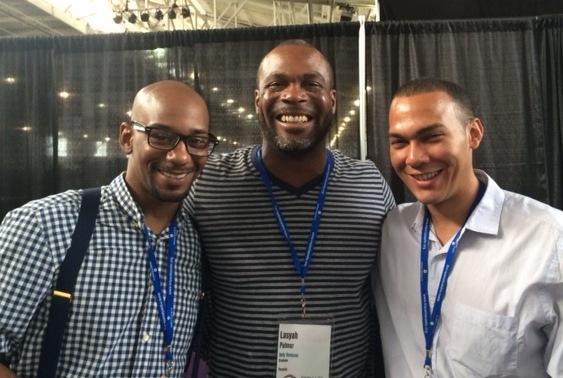

There is nothing the startup community loves more than a good disruption. And what better to disrupt than the prison-industrial complex -- after all, a staggering 100 million Americans have criminal records and keeping them locked up costs us $63.4 billion a year.
As of last October, the U.S. incarceration rate was 716 per 100,000 people. While the United States represents about 5 percent of the world's population, it houses around 25 percent of the world's prisoners. Worse still, 76 percent are rearrested after release and of those 89 percent are unemployed at re-arrest. So, we see the connection between crime and poverty in action.
One former member of the investment community is turning to a uniquely American solution to solve the problem: entrepreneurship.
The formerly incarcerated are not without skills. Think about it: Drug sales require cash flow management, sales and marketing. Robberies -- successful ones at least -- require strategic planning. Catherine Hoke -- who comes from the venture capital and private equity world -- founded Defy Ventures in 2010 to show ex-convicts (she prefers the term "Entrepreneurs in Training" or EITs) how to use the skills they already have to develop legal businesses.
Hoke spoke at SOCAP 2014 about Defy Ventures' model. The nonprofit provides training to EITs in skills like leadership, business plan development, finance, sales and marketing -- and even things like etiquette: how to dress for a meeting and how to shake hands in a business setting. The program's mentors and teachers include startup luminaries like Seth Godin and Tim Draper. As inspiring as the Defy Ventures story was, I was skeptical. How could 300 hours of training really disrupt a life, disrupt a community? After all, people have been trying to solve the cycle of urban poverty and prison for decades, and the number of people in prison just keeps increasing.
My skepticism vanished when I chatted with three Defy graduates about their experiences in the program.
There's Lasyah Palmer, the father figure by default, dressed in a striped shirt and colored jeans; 31-year-old Jamel Graham in trendy black nerd glasses, checkered shirt and suspenders; and 28-year-old Coss Marte in a button-down shirt open at the collar -- each one shining with charisma and charm. None of these three would be out of place in one of San Francisco's tech-center co-working spaces or expensive coffee shops, and yet it would be hard to pick out the jewel heist mastermind or drug kingpin among them.
These three men wanted an opportunity to change careers, and when the Defy Ventures program presented itself, they grabbed the bull by the horns and let it buck away. On the question of whether or not Defy can really change lives, the men agreed that personal choice was the first step to change. Graham put it this way: "I don’t think Defy can take credit for anyone’s life. Because if you are in the program, it's because you’ve already changed your own life." But the Defy Ventures program, and especially its mentors, helped all three to jumpstart their new activities -- success became theirs for the taking. "Everyone I come into contact with, I just I squeeze the hell out of," joked Marte, describing how he finds clients and refines his business model.
When asked where they'd be without the program Palmer said, "I’d still be legit, but Defy has made it a smoother transition. It's Hyundai vs. Mercedes Benz." Marte saw a bleaker alternative. "I would have been doing minimum wage. I humbled myself to do that [after a career leading a $2 million drug business] because I was committed to changing. Eight dollars an hour isn’t much, but I’m not worth much to my family when I’m in prison." But Defy has given him a path to the pride of legitimate business ownership.
Though personal motivation is a key factor in success at Defy, all three agreed that the influence was reverberating through their communities. Explained Marte, "People in my neighborhood saw me come home, thought I was going to do the same thing -- [sell drugs]. People ask [for drugs] all the time, but I don’t even know how to find a cigarette." He also explained that he'll be hiring folks from his neighborhood as his company grows.
Palmer agreed. "[When I was in prison] I saw people go in and out [over and over again]. It makes you wonder, is it possible to stay out when you leave? It’s hard when you’ve been in for a long time ... People who come home from prison are looked up to. If you turn that around and do something different, that changes perceptions little by little."
Graham described how his relationship with his old friends has changed. "In my neighborhood, we’re very competitive. We used to compete over who could sell the most drugs. Now people are competitive with me, want to see how to do what I do ... They ask me for advice about their business plans."
In addition to these three success stories, Defy graduated 112 EITs in 2013. Of these, an impressive 95 percent are currently employed. Grads have seen an 83 percent increase in income and experienced only a 5 percent recidivism rate thus far. Of course, those impressive stats represent rates of return after only one year, and time will tell if the recidivism rate increases.
Policy leaders have been trying to eradicate the correlation between urban poverty, race and crime for decades and it is a damn difficult nut to crack. Millions of dollars in programming have been thrown at this problem, and it's been addressed through hundreds of government and corporate programs over the years -- and still the cycle remains tragically in place. Whether or not Defy Ventures can change the world, there is no doubt it's already changing some lives for the better.
Intel: The Push to Stop Conflict Minerals is Gaining
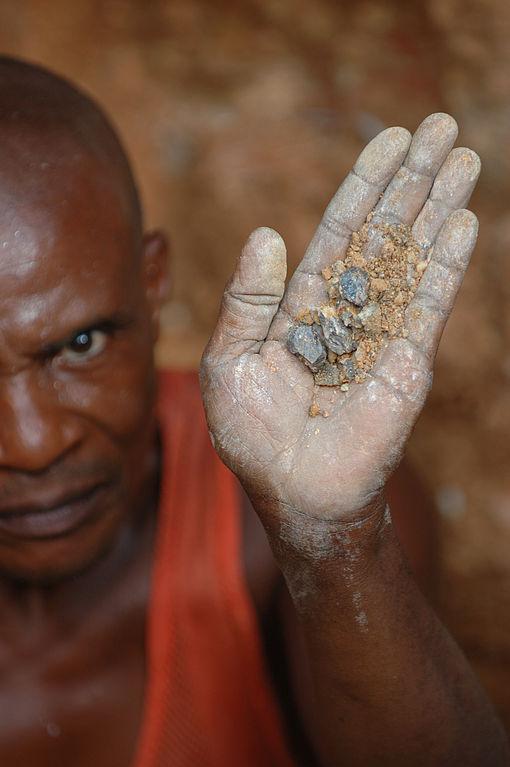

Human rights activists have been waiting for at least a year to see the Department of Commerce’s breakdown of global conflict mining sites. Still, the department’s announcement last week that its data was, well, inconclusive, was no surprise.
In a 24-page report that was intended to address the whereabouts of conflict mineral mines and processing facilities, the DOC admitted that while it was able to supply a list of 400 operational sites throughout the world, its hands were tied when it came to determining certifiably which used slave or abusive labor in their camps.
“We do not have the ability to distinguish such facilities,” the DOC said matter-of-factly.
In 2010, the Dodd-Frank Act charged the DOC with the responsibility of identifying “all known conflict mineral processing facilities world-wide” and filing a report by January 2013, a deadline the DOC apparently wasn’t able to meet. And to its defense, the challenge of narrowing down where all gold, tungsten, tantalum and tin come from is formidable. Both the Garmin Corporation (which makes GPS equipment using mined substances) and U.S. Chamber of Commerce's Center for Capital Markets Competitiveness has weighed in on this requirement, with the latter questioning whether the Act actually helps or hinders human rights in repressed areas.
Still, the challenge hasn’t deterred some companies and agencies from trying to remove conflict minerals from the marketplace. The Intel Corp., which announced in January of this year that it would source all of its microprocessor materials from conflict-free zones, has now upped the ante. The company says that by 2016, it wants its supply chain to be completely conflict-mineral-free.
And it’s working hard to bring along its customer base. To help spread the word about what the expression “conflict minerals” really means, the company gave an overview of its corporate responsibility efforts. It's provided easy-to-read infographics on its website to demonstrate where conflict minerals are used in our computers, such as the microprocessor, camera and charging battery.
Intel has also provided a handy map that zeroes in on the very areas of eastern Democratic Republic of Congo and nearby countries where the minerals are mined and processed, from the point of extraction and smeltering to the manufacturing and purchase of finished products.
And it's provided numbers: plenty of data to show why the 5.4 million casualties that have been attributed to the conflict mineral trade make it the “most brutal conflict since World War II.”
So, why is it that a company that relies on these minerals to make its products has been more successful in nailing down where conflict materials come from than a government agency? Some would say it’s due to Washington bureaucracy, but it seems to me the issue speaks to the very heart of why it’s been so hard to eradicate conflict-based labor, and why Intel’s approach, with its consumer-based initiative, is the answer to this human rights issue.
Just the same, the General Accounting Office (GAO) hasn’t let Commerce off the hook. In June, the GAO took issue with DOC’s failure to comply with the Dodd-Frank requirements on time. It levied the lack of response on Commerce’s lack of “a plan of action, with associated time frames, for developing and reporting on the list of conflict minerals processing facilities worldwide.” Forming an action plan, said GAO, “with timeframes could better position Commerce to report on the status of its efforts to produce a final list to Congress and to hold its personnel accountable for completing activities.”
To make the point, the GAO published its own list. In this case, it is an inventory of the compliant facilities, some of which have sprung up since Dodd-Frank came into existence.
Conflict-free facilities, “have grown to include new mine sites, countries and smelters. For example, the Conflict-Free Smelter Program, an industry-led effort, has expanded from 26 smelters certified as conflict-free in 2013 to 85 smelters as of April 25, 2014,” said the GAO.
Maybe that’s the way to approach this issue. Perhaps documenting the who’s and where’s of conflict mineral profits shouldn’t be the responsibility of a commerce office that has neither the manpower, the executive privilege nor the law enforcement protection to survey illicit camps in foreign countries.
Efforts of companies like Intel and government reports that detail the positive changes to a dynamic, controversial and lucrative industry may be the best way to send a message that minerals and products that are gained at the expense of human rights are no longer wanted by those who face customer scrutiny.
Image credit: Julien Harneis
Op/Ed on CSRwire: We Did Our Job, Time to Move On


Ed Note: The following op/ed is from Joe Sibilia, former CEO of CSRwire, which was recently acquired by 3BLmedia.
By Joe Sibilia
Like a flower that blooms and dies to seed new growth, CSRwire.com lived out its usefulness, spawning and raising awareness for innovative approaches to a new economy. Our talented team has been seasoned by the dripping drama of a federal court case, driven by the challenges of a shifting media landscape, determined by detractors’ defilements and championing a new approach to business -- an awesome effort. With a full appreciation that the bloom was fading and the end was near, they extended the limits of their imagination, experimented and explored new boundaries. It was time to move on and continue our experiment with innovating new ideas.
As we close the doors on a remarkable 15 years, there is a lot of history and achievements to remember and many organizations and individuals to appreciate. Although this space is not big enough to recognize everyone, we’ll do our best to highlight many.
It has been said that life is too short to learn from your own mistakes; we should learn from the experiences of others. Learn from our mistakes and benefit from our experiences. This post will focus on appreciating our many friends and colleagues. My earlier post focused on sharing what we learned. I hope to engage in further conversations.
Vice President of Partnerships Kristen Sibilia sums up the philosophy leading CSRwire best: "Business is personal, it’s family." We ask ourselves: “If we treat our business relationships like immediate family, would we act differently?” We've treated our business partners as true family members. A lifetime indoctrination in corporate social responsibility (CSR) and sustainable startups helped us remain critical and open to innovation. We appreciate all your efforts.
Decades before the turn of the century, inside the canopy of a Vermont garage, Jay Falk and his team of developers conceived and nurtured CSRwire as the lone voice screaming the messages of hope of its members, to anyone that would listen. Jay needed additional financing to create and develop more innovative approaches, like the OneReport, and Meadowbrook Lane Capital, which successfully used the wire for its clients and in an attempt to take Ben & Jerry's Homemade private and create a private stock exchange, stepped in.
In the blizzard of a Nor'easter snowstorm, Jan Morgan trekked to Gasoline Alley and helped shovel us out, established structure with the company and as President, stayed for three years. She hired Aman Singh as Editorial Director, who through her journalism and digital communication experience steered the wheel as we navigated from a traditional newswire to a true innovative digital media platform.
Jack Wysocki has been with CSRwire and stayed the course longer than anyone else, sharing his experience and insights with hundreds of members and collaborating on getting their CSR and sustainability news out to the world. Frank Fitzgerald Attorneys at Law sowed a depth of talent and compassion, harvesting consistent legal counsel. We've had great technology partners in Fuzz Productions, fellow B Corp Singlebrook Technologies and Mark Firehammer.
The members of our LLC/B Corp., Doug and Ann Stockbridge, David Mager, Dr. James Faulkner, Frank Fitzgerald, Jan Morgan and Jay Falk, demonstrated a willingness to be patient and allow us the flexibility to challenge traditional approaches to business.
Over the years there have been various Executive Directors, including Meagan Connelly, Christina O'Connell and Greg Schneider, all of whom helped distinguish CSRwire and leveraged their association with us to pursue successful careers on their own.
Business for Social Responsibility (BSR) collaborated with us in their infancy, as their sole communication partner, to advance the voice of their members and offer a platform to share best practices with a global audience.
Sustainable Brands and the Boston College Center for Corporate Citizenship used our rich platform to inform, educate, attract and form successful business alliances. We also enjoyed valuable partnerships with Ceres and the Social Venture Network as they were emerging from obscurity.
The Hauser Center at Harvard and the Initiative for Responsible Investment launched “From Transparency to Performance – Industry Based Sustainability Reporting on Key Issues” on CSRwire.com, ultimately leading Dr. Jean Rogers to take the leap and inaugurate the Sustainability Accounting Standards Board.
Coop America (now known as Green America) led multiple activists’ efforts, broadcasting their plans and objectives to our audience, impacting changes as wide as GMOs and conflict minerals.
A nationwide training tour of Business Wire bureaus inspired Business Wire to pursue an exclusive partnership with us, following their purchase by Berkshire Hathaway.
Kristen Sibilia was embedded in the New York headquarters of PRNewswire and trained their staff on the finer art of CSR communication.
Marketwired, our Canadian partner, established a powerful tool to augment the social and environmental initiatives of an entire nation.
Getting behind the curtain at Bloomberg provided a rare glimpse of the wizard of Wall Street. Bloomberg tapped into our feeds for voluntary disclosure and popularized the term ESG (Environment, Social and Governance) by making our content available to its users.
We did not sit on the sidelines and watch the shifting role of capitalism. As we gained momentum and added new members across the corporate, NGO, government and academic sectors, we continued to highlight the movement through our independent reporting and op/eds. Led by Sarah Peyok and Francesca Rheannon and in recent years by Aman Singh, our independent reporting and commentary section published peerless and honest reports about challenges and opportunities, earning distinction from peers and multiple media outlets.
Countless authors’ books and events were featured free of charge, and nonprofits were extended significant discounts to get their word out.
From the formation of the United Nations Global Compact, the Global Reporting Initiative and the launch of B Lab and its B Corporation certification, to the advent and consequent debate over integrated reporting, the confluence of marketing, PR and CSR as well as the opportunities offered by social media, we discussed, debated, reported and distributed content to a diverse audience of journalists, analysts, activists, academics, investors, investor relations, public relations and pubic policy professionals worldwide.
We partnered with TriplePundit to launch innovative stakeholder engagement campaigns. These facilitated conversations were aimed at taking a pulse of your community, sharing knowledge and inspiring action. These resulted in millions of impressions, hundreds of engaged stakeholders and hours of critical feedback for our members.
In 2013, when the University of California dipped into our archives to conduct a study on the voluntary disclosures of our members and found a link between voluntary disclosures and increased shareholder value, Harvard was conducting a similar study between good corporate citizenship and access and cost of capital. We knew then that staying focused on our mission to turn values into valuation was finally beginning to shift the mainstream landscape, propelled further by peer reviewed research, making the business case palpable. Our investments and commitment in time, effort and capital would begin to pay community dividends long after our passing.
We’ve learned as much in this deal as we did selling environmental technology and fruit beverage formulas to PepsiCo, starting one of the first micro finance small business banks in America, preserving the social and environmental initiatives of Ben & Jerry’s Homemade Ice Cream, incubating over fifty social enterprises on Gasoline Alley and working with the least employable and the greatest public safety threats in our community. Each deal has been a new learning experience.
In all, we’ve been at the forefront pioneering a new way of doing business. The pieces left behind are like children on their way to adulthood, plowing a new beginning into the future. Best wishes to all searching for a better way of doing business.
Joe
Millennials Take On Monsanto


Editor’s Note: This article originally appeared in “The Millennials Perspective” issue of Green Money Journal. Click here to view more posts in this series.
By John Roulac
The issue of how we grow and process our food, while it’s always been important, is now a hot topic both at the kitchen table and on Wall Street. From the recent scandal about a chemical used in yoga mats being found in Subway bread to the rising awareness of genetically modified organisms GMOs and demands to label their presence in foods, the public is fast awakening to the need for safe, whole, natural nourishment.
In early May 2014, the stock price of Whole Foods Market dropped about 20 percent in 24 hours, based largely on fears that Walmart and other grocery giants will overtake its share of organic food sales. The number of equity funds looking to invest in the next Annie’s or Clif Bar is astounding. Astute investors now understand that food impacts not just waistlines but bottom lines.
The elephant in the room is that agriculture, not transportation, is globally the greatest contributor to greenhouse gases — an issue that gets glossed over by Al Gore and 350.org alike. The media, whether in the recent New York Times food reportage or in the May 2014 National Geographic cover story on “The New Food Revolution,” all fail to mention the three most pressing food issues: the climate change connection; the vast subsidies to corn, soy and wheat; and the massive increase in the use of Monsanto Roundup with its human health and ecosystem impacts.
Central to the conversation are the questions: How do we grow our food in a more sustainable way, and who decides? Should America lead the world in turning over our heritage of ancestral seeds to Monsanto or DuPont for them to patent as intellectual property? It’s becoming ever more widely known that each firm has a long history of making lethal war chemicals, creating toxic manufacturing sites that leak carcinogens into disadvantaged communities everywhere, and influencing the EPA, USDA, Congress and the White House so that decisions made — such as the Farmer Assurance Provision (widely called by its critics the “Monsanto Protection Act”) — favor biotech.
The recent good news is that, on May 8, 2014, per a law signed by Gov. Peter Shumlin, Vermont became the first U.S. state to mandate the labeling of foods made with genetically modified organisms. The Grocery Manufactures Association (GMA) has challenged the new law in court in what is expected to be an epic legal battle of the people vs. corporations. Supporting members of GMA include Starbucks, Kellogg’s and General Mills.
The three ways Monsanto is being defeated
In spite of Monsanto’s death grip on the food system, important progress is being made in three key areas: (1) public education via social media, leading to (2) wiser food choices and (3) more sustainable investments.
All great movements begin at a grassroots level. Think of the civil rights sea change in the 1960s: The government acted to pass the civil rights bill only after the people had reached a tipping point about racial injustice. Having started in a similar grassroots fashion, the organic food movement is now well on its way to changing the food system worldwide.
Yet Monsanto and Big Ag are much better at crafting propaganda than were the bigots of the 1960s. The three biggest lies: that GMOs will feed the world; that organic agriculture can coexist with GMOs; and that Roundup-tainted GMO foods have been proven safe.
Although tens of millions of Americans might not understand all the complexities, they have a gut sense that something is very wrong with our food system, and little faith that Monsanto should be in charge of a baby’s nourishment. They can’t help but wonder how much Monsanto herbicide content in a mother’s breast milk is safe.
Cheerios go non-GMO
Some of the biggest news in the food industry this year is the General Mills conversion of Cheerios to a non-GMO cereal. This cultural milestone signals not only the swelling consumer exodus from industrial GMO foods, but also the rise in the use of social media by foodies to educate the public.
The Cheerios conversion is representative of a broad and radical trend in the entire North American food industry, as exemplified by last year’s announcement from Whole Foods Market that GMO foods and supplements must be labeled by 2018 — a revelation that the non-GMO movement was becoming big business.
The GMO Inside coalition (of which I’m co-founder and co-chair) had begun to target Cheerios, in part because General Mills was a big funder of “No” on California’s Prop 37, the failed right-to-know labeling campaign. In subsequent months, GMO Inside got 50,000 anti-GMO comments placed on the Cheerios Facebook wall.
Read the complete article here.
John Roulac founded Nutiva in 1999 to create a food system that nourishes people and the planet. As a vocal challenger of the industrial food system, he is a strong advocate for hemp agriculture, GMO labeling, organic farming, and healthy food for all. Through his leadership, Nutiva has been named one of Inc. Magazine’s fastest-growing food companies in America for five consecutive years. He has founded four nonprofit groups, including GMO Inside and the Nutiva Nourish Foundation, which donates 1 percent of Nutiva’s sales to support sustainable agriculture and other environmental programs. John is the author of four books, including Backyard Composting and Hemp Horizons: The Comeback of the World’s Most Promising Plant.
5 Reasons You Should Become a Certified B Corp


This is the fifth in a weekly series of excerpts from the upcoming book The B Corp Handbook: How to Use Business as a Force for Good (Berrett-Koehler Publishers, October 13, 2014).
By Ryan Honeyman
There are many benefits to becoming a Certified B Corp.
B Corp certification sets you apart as a thought leader, distinguishes your business in a crowded market, and helps associate your brand with some of the most socially and environmentally responsible companies on the planet.
The particular benefits that are most attractive to you will vary depending on your industry, your goals and objectives, and where you are in the life cycle of your business (e.g., whether you are seeking capital, entering a new market or planning for succession).
I was most attracted to the quality of the community.
"For me, the biggest surprise in our long association with the B Corps has been the extraordinary value of our network of fellow B Corps and B Corp executives. The quality of that network has always been remarkable, and it has tangibly improved over time. We’re proud to be part of it." —Bryan Welch, Publisher, Ogden Publications
When I found out that Dansko, King Arthur Flour, Method and Seventh Generation were Certified B Corporations, I had no doubt that I also was going to certify my company. I had found a group of like-minded, innovative and dynamic entrepreneurs who shared my core values. I had found my “tribe.”
I will discuss each of the five reasons in detail in the following weeks. For now, here is the first reason.
Reason No. 1: Being part of a community of leaders with shared values
The incredible value of the community came as a surprise for many B Corps.
Many said that they were originally interested in becoming a Certified B Corporation in order to take advantage of the marketing benefits, to receive discounts on products and services, or to benchmark their social and environmental performance.
Almost universally, it has been the strength of the community — and the sense of being part of something bigger than an individual business — that has become the most deeply fulfilling aspect of B Corp certification.
The positivity, collaboration, excitement, innovation and pure joy of being part of a community that shares your core values and a clear sense of purpose is what inspires, motivates and energizes B Corps to use their businesses as a force for good. The B Corp community benefits from a high level of trust, a high quality of intellect and an entrepreneurial spark that is more powerful than that of any other group I have ever seen.
"I knew the certification would be valuable by itself, but I didn’t anticipate the benefits of joining this vibrant community of other leaders who are passionate about finding a new way to integrate their values with their businesses." —Elisa Miller-Out, CEO, Singlebrook Technology
In many ways, the value of the B Corp community itself makes sense. The rigor of the B Corp certification process means that it takes serious dedication to complete -- helping to filter out businesses that are not truly committed to meeting high standards of performance, accountability and transparency. The result is a passionate, highly innovative group of some of the most socially and environmentally conscious businesses on the planet.
In addition, although being part of a community with shared values is highly gratifying on an emotional and intellectual level, the networking, collaboration and partnership opportunities inherent in the B Corp community can be highly beneficial to a company’s bottom line.
In the San Francisco Bay Area, for example, a group of local B Corps started a series of networking groups that are designed to cultivate relationships, increase collaboration, and generate business referrals for the benefit of group members and the larger B Corp community. Similar groups have formed in Illinois; Colorado; New York; North Carolina; Oregon; Southern California; and Vermont, with more forming all the time.
"We hadn’t fully grasped what an incredible support system is built into this amazing community of B Corporations. We share and benefit from each other’s wisdom and experience and networks, we brainstorm together, we build mutually beneficial partnerships in a really organic way. Every company becomes greater than the sum of its parts. It’s a true alliance of a very passionate community." —Merlin Clarke, Owner, Dogeared Jewels & Gifts
Stay tuned for Reason No. 2, coming next week.
Ryan Honeyman is a sustainability consultant, executive coach, keynote speaker, and author of The B Corp Handbook: How to Use Business as a Force for Good. Ryan helps businesses save money, improve employee satisfaction, and increase brand value by helping them maximize the value of their sustainability efforts, including helping companies certify and thrive as B Corps. His clients include Ben & Jerry’s, Klean Kanteen, Nutiva, McEvoy Ranch, Opticos Design, CleanWell, Exygy, and the Filene Research Institute.
To get exclusive updates and free resources that can help you learn more about B Corporations, sign up for Ryan’s monthly newsletter. You can also visit honeymanconsulting.com or follow Ryan on Twitter: @honeymanconsult.
Trans Energy to Restore Streams, Wetlands Damaged by Fracking
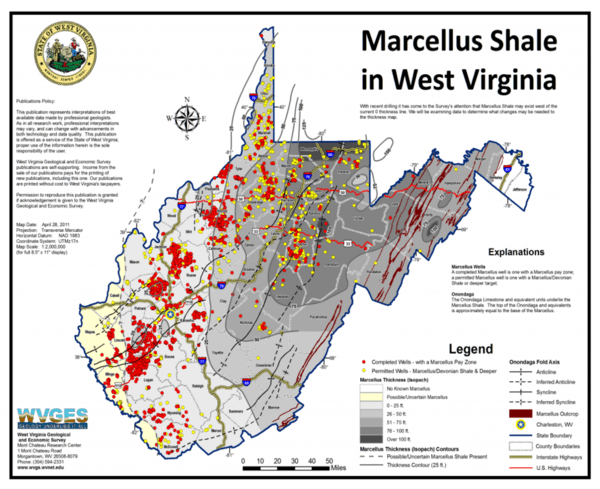

From badly underestimated methane emissions and groundwater contamination to triggering earthquakes, the multiple human and environmental health threats posed by horizontal drilling and hydraulic fracturing (“fracking”) of shale deposits to release natural gas and petroleum have been well documented.
Negligence and shoddy practices by oil and gas companies exploring for natural gas and petroleum in tightly-packed shale deposits also threatens ecosystems, human health and safety, and critical natural resources on the surface – including precious freshwater resources.
On Sept. 2, the U.S. Environmental Protection Agency and Department of Justice announced a settlement with Trans Energy that requires the oil and gas company to restore streams and wetlands at 15 sites in West Virginia -- across which it had allegedly discharged dredge or fill material without authorization. In addition to paying a $3 million penalty that is to be divided equally between the EPA and the West Virginia Department of Environmental Protection (WVDEP), it's estimated that Trans Energy will spend over $13 million to complete stipulated environmental mitigation and restoration work.
Damaging West Virginia streams and wetlands
According to evidence amassed by the EPA, WVDEP and the public, Trans Energy in 2011 and 2012, “impounded streams and discharged sand, dirt, rocks and other materials into streams and wetlands without a federal permit to construct well pads, impoundments, road crossings and other facilities related to natural gas extraction.” The violations allegedly impacted some 13,000 linear feet of stream and over an acre of wetlands.
In the summer of 2014, Trans Energy conducted an internal audit and ultimately disclosed to EPA alleged violations at another eight locations. The consent decree announced on Sept. 2 covers alleged violations at these locations as well.
The EPA highlights that filling wetlands and damaging streams can have serious consequences for human and environmental health and safety:
“Streams, rivers, and wetlands benefit the environment by reducing flood risks, filtering pollutants, recharging groundwater and drinking water supplies, and providing food and habitat for acquatic species,” EPA states in a news release.
“As part of our commitment to safe development of domestic energy supplies, EPA is working to protect wetlands and local water supplies on which communities depend,” Cynthia Giles, assistant administrator of EPA’s Office of Enforcement and Compliance Assurance, was quoted as saying. “By enforcing environmental laws, we’re helping to ensure a level playing field for responsible businesses."
Added Sam Hirsch, acting attorney general of the Justice Department's Environment and Natural Resources Division:
“Today’s agreement requires that Trans Energy take important steps to comply with state and federal laws that are critical to protecting our nation’s waters, wetlands and streams. We will continue to ensure that the development of our nation’s domestic energy resources, including through the use of hydraulic fracturing techniques, complies with the Clean Water Act and other applicable federal laws.”
Fracking and water resources
Besides having to dump dredge and fill material, companies using fracking to extract oil and gas across the extensive Marcellus Shale are tapping streams and rivers in Pennsylvania and West Virginia heavily.
Thousands of fracking wells are up and running across the Marcellus Shale, an area that extends from northern New York State to the south, west and east into Pennsylvania, New Jersey, Maryland, Ohio and West Virginia.
On average, fracking wells in Ohio and Pennsylvania use 4.1 to 5.6 million gallons of freshwater, according to a study conducted by researchers at San Jose State University and the consulting company Downstream Strategies. Furthermore, they concluded that 80 percent of fracking rig water in West Virginia comes from surface waterways.
*Images credit: 1) Fracking West Virginia; 2) West Virginia Geological and Economic Survey
Shining Hot to Get It Cold: Unilever Tests Solar-Powered Freezers


Yes, now you can grab an ice cold Popsicle on a hot sunny day while strolling through New York City’s Central Park — from a vendor using a solar-powered ice cream freezer.
The freezers being tested in Central Park operate free of electricity — vendors can even charge their own mobile devices by plugging them into outlets attached to the freezer units.
It seems fitting that Unilever, the world’s largest producer of ice cream, is rolling out the world’s first solar freezers in Central Park to keep those Popsicles, Good Humor or Magnum-brand bars cold while at the same time putting no strain on the environment.
Brandchannel reported the freezers are part of the company’s Sustainable Living Plan, which features a commitment to reduce greenhouse gas emissions from refrigeration. “It’s a strategic move for Unilever that already relies on more than two million POS freezers to reach consumers and may become the first commercially-viable solar freezer in the category,” contributor Sheila Shayon wrote.
Unilever committed to purchase 850,000 freezers between 2010 and 2015, but it has already exceeded that goal, buying nearly 1.05 million freezers to date. The freezers, made using recycled materials, reduce energy consumption to less than 0.5 kilowatt-hours per day — equivalent to running a television for about three hours. This in turn reduces the load on national power grids and eliminates the need for producing large quantities of dry ice.
The freezer's efficiency can be monitored on any mobile device — tracking and sharing geo-location data, energy use, cooling performance and supply of products. The company also recently announced new ice cream cabinets for retailers, developed for its Wall's brand, that boast a 70 percent reduction in energy use.
The solar freezers follow Unilever’s efforts to remove the last remaining hydrofluorocarbons-reliant freezers from use. Unilever has been used a climate-friendly hydrocarbon refrigerant alternative since 2004. More recently it has been driving an industry commitment to phase out damaging HFC’s by 2015 through participation in the Consumer Goods Forum.
“We have committed to using refrigerants which have a GWP (global warming potential) of less than three, such as hydrocarbons (HC), CO2, ammonia, water and air, which can all be used as cooling agents in refrigerators and freezers,” Unilever says. “Almost all our production facilities and cold stores already use ammonia in their refrigeration systems. Ammonia has the added benefit of being very energy-efficient for large-scale use.”
Any news that advances the cause of guilt-free ice cream consumption is good news. There’s a kind of natural and spiritual unity in using the sun to freeze your ice cream treat.
Image: Unilever solar ice cream freezer from Unilever website